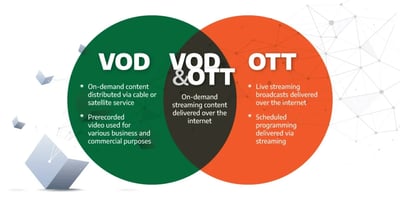As we enter 2024, the Content Delivery Networks (CDN) landscape has undergone significant...
Case Study on CDN Impact in Video Streaming Services
Content Delivery Networks (CDNs) play a crucial role in enhancing the performance and reach of video streaming services. This article delves into the various aspects of CDN technology and its profound impact on the video streaming industry.
The Evolving Role of CDNs in Video Streaming
Traditionally, video service and delivery network providers were the same. However, with the proliferation of direct-to-consumer streaming, CDNs have begun managing content from a variety of external sources. This shift necessitates a more versatile and innovative approach, especially in terms of security and compliance with internet standards. CDNs are evolving to offer secure, flawless streaming experiences at optimized costs, creating opportunities for new partnerships and business models (streamingmediaglobal.com).
Performance Enhancement through CDN Technology
The performance of CDN servers is critical. Optimizing the use of hardware such as chipsets, RAM, and network cards can significantly enhance CDN performance. Technologies like multicast ABR (Adaptive Bitrate Streaming) allow efficient distribution of live content to large audiences, reducing network congestion and improving viewer experience. For instance, the Italian telecom operator TIM used multicast ABR to deliver the 2022 French Tennis Open in 4K, enhancing the quality of experience for viewers (streamingmediaglobal.com).
Global Audience Reach and CDN Efficiency
CDNs efficiently distribute content across servers worldwide, crucial for catering to a global audience. This distribution reduces latency and buffering, ensuring a smooth user experience regardless of geographical location. For example, during high traffic events like live sports or breaking news, CDNs prevent website crashes by handling sudden surges in traffic (wowza.com).
CDN Infrastructure and Operational Models
A typical CDN places media storage and playback appliances at the edge of its network. These appliances, often referred to as micro data centers, are crucial for companies like Netflix, which maintains thousands of such boxes globally, each holding a significant portion of its media catalog. This approach enables efficient content delivery with minimal latency (deloitte.com).
CDN Usage in Live Streaming
In live streaming, CDN caches video segments in real-time, allowing them to be served from the CDN cache instead of the origin server. This reduces latency, buffering, and the load on the origin server, ensuring a more reliable viewing experience (vdocipher.com).
Netflix: A Case Study in CDN Usage
Netflix's transition to AWS and the development of its OpenConnect CDN exemplify the strategic use of CDN technology. By dividing its infrastructure into multiple microservers and using algorithms to distribute content intelligently, Netflix has significantly reduced buffer times and improved streaming quality for its global audience (vdocipher.com).
-----
The impact of CDN technology on video streaming services is substantial. From enhancing performance and efficiency to enabling a global reach, CDNs are integral to delivering high-quality streaming experiences. As streaming services continue to evolve, the importance of CDNs in managing network traffic, improving access speeds, and providing reliable service delivery will only increase.
BlazingCDN has emerged as a noteworthy player in the CDN market, particularly for video streaming services. It offers an appealing blend of high performance and cost-effectiveness, making it a compelling choice for media agencies, app developers, and content-heavy websites.
Key Aspects of BlazingCDN's Appeal
1. Cost-Effectiveness: BlazingCDN stands out for its economical pricing model. Unlike some of the larger CDN providers, it offers a "Pay-As-You-Go" system, allowing users to pay for only what they use. This model is especially beneficial for high-traffic projects, as it offers a lower price per TB, enabling significant savings on CDN costs. Furthermore, BlazingCDN maintains a consistent pricing model across all regions, which is relatively unique in the industry. Many providers tend to charge higher fees in regions like Asia due to the cost of internet there, but BlazingCDN avoids this, providing a financial advantage to businesses operating internationally.
2. High Performance: Despite its lower pricing, the quality of service offered by BlazingCDN is comparable to more expensive providers. This is achieved by placing servers only in large nodes that are regional internet centers and using NVMe servers for faster and cheaper data transfer. This infrastructure supports a high total bandwidth (3Tbps), reducing the likelihood of issues like DDoS attacks and other logistical inconveniences.
3. Technological Advancements: BlazingCDN leverages advanced technologies such as the NTT Tier 1 Global IP Network and Equinix data centers. It also offers integrated object storage, providing almost unlimited storage capacity for content files. These features ensure efficient data transfer and robust performance.
4. Customer-Centric Approach: BlazingCDN is characterized by its focus on customer support and dedication to providing quality services at the best price. This customer-centric approach is evident in its flexible pricing and personalized support services.
BlazingCDN's combination of affordable pricing, high performance, and advanced technological infrastructure makes it an attractive option for businesses seeking efficient and cost-effective CDN solutions for video streaming services. Its unique pricing strategy and commitment to customer satisfaction further enhance its value proposition in the competitive CDN market.


